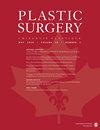术前妊娠检查
IF 0.6
4区 医学
Q Medicine
引用次数: 0
摘要
背景:在2%的妊娠中,非产科手术需要全身麻醉。对孕妇进行手术可能对胎儿、患者、医生和医院都有重大影响。通过对整形外科文献的回顾,作者无法找到整形手术患者术前妊娠检测的现行指南或建议。方法通过PubMed、OVID和MEDLINE关键词检索,对麻醉、手术及术前妊娠试验中有关母胎风险的文献进行检索。随后对目前的文献进行了回顾和总结。结果:美国麻醉医师协会麻醉前评估工作组的一份报告允许医生和医院在术前妊娠检测方面实施自己的政策和实践。术前妊娠试验偶然发现阳性的总体频率为0.34%至2.4%。各种研究都报道了自然流产、先天性异常(如神经管缺陷)以及在怀孕期间接受麻醉和手术的母亲所生的低体重儿和极低体重儿的发生率增加。因为公认的做法是推迟择期手术在怀孕期间,识别这些患者在手术前是至关重要的。结论基于目前的证据,作者提供了术前妊娠检测的最佳实践建议。本文章由计算机程序翻译,如有差异,请以英文原文为准。
Preoperative pregnancy testing
Background In up to 2% of all pregnancies, the need for general anesthesia in a nonobstetrical surgery arises. Surgery on a pregnant woman may have significant implications for the fetus, patient, physician and hospital. On review of the plastic surgery literature, the authors were unable to find current guidelines or recommendations for preoperative pregnancy testing in the plastic surgery patient population. Methods Literature regarding maternal and fetal risk during anesthesia and surgery, as well as preoperative pregnancy testing was identified by performing a PubMed, OVID and MEDLINE key word search. The current literature was subsequently reviewed and summarized. Results A report by the American Society of Anesthesiologists Task Force on Preanesthesia Evaluation allows physicians and hospitals to implement their own policies and practices with regard to preoperative pregnancy testing. The overall frequency of an incidentally found positive preoperative pregnancy test ranges from 0.34% to 2.4%. Discussion Various studies have reported increased rates of spontaneous abortions, congenital anomalies, such as neural tube defects, and low and very low birth weight infants born to mothers exposed to anesthesia and surgery during pregnancy. Because the accepted practice is to postpone elective surgery during pregnancy, identifying these patients before surgery is critical. Conclusions Based on the current evidence, the authors' best practice recommendation for preoperative pregnancy testing is provided.
求助全文
通过发布文献求助,成功后即可免费获取论文全文。
去求助
来源期刊

Plastic Surgery
SURGERY-
CiteScore
0.67
自引率
0.00%
发文量
0
审稿时长
6-12 weeks
期刊介绍:
Plastic Surgery (Chirurgie Plastique) is the official journal of the Canadian Society of Plastic Surgeons, the Canadian Society for Aesthetic Plastic Surgery, Group for the Advancement of Microsurgery, and the Canadian Society for Surgery of the Hand. It serves as a major venue for Canadian research, society guidelines, and continuing medical education.
 求助内容:
求助内容: 应助结果提醒方式:
应助结果提醒方式:


